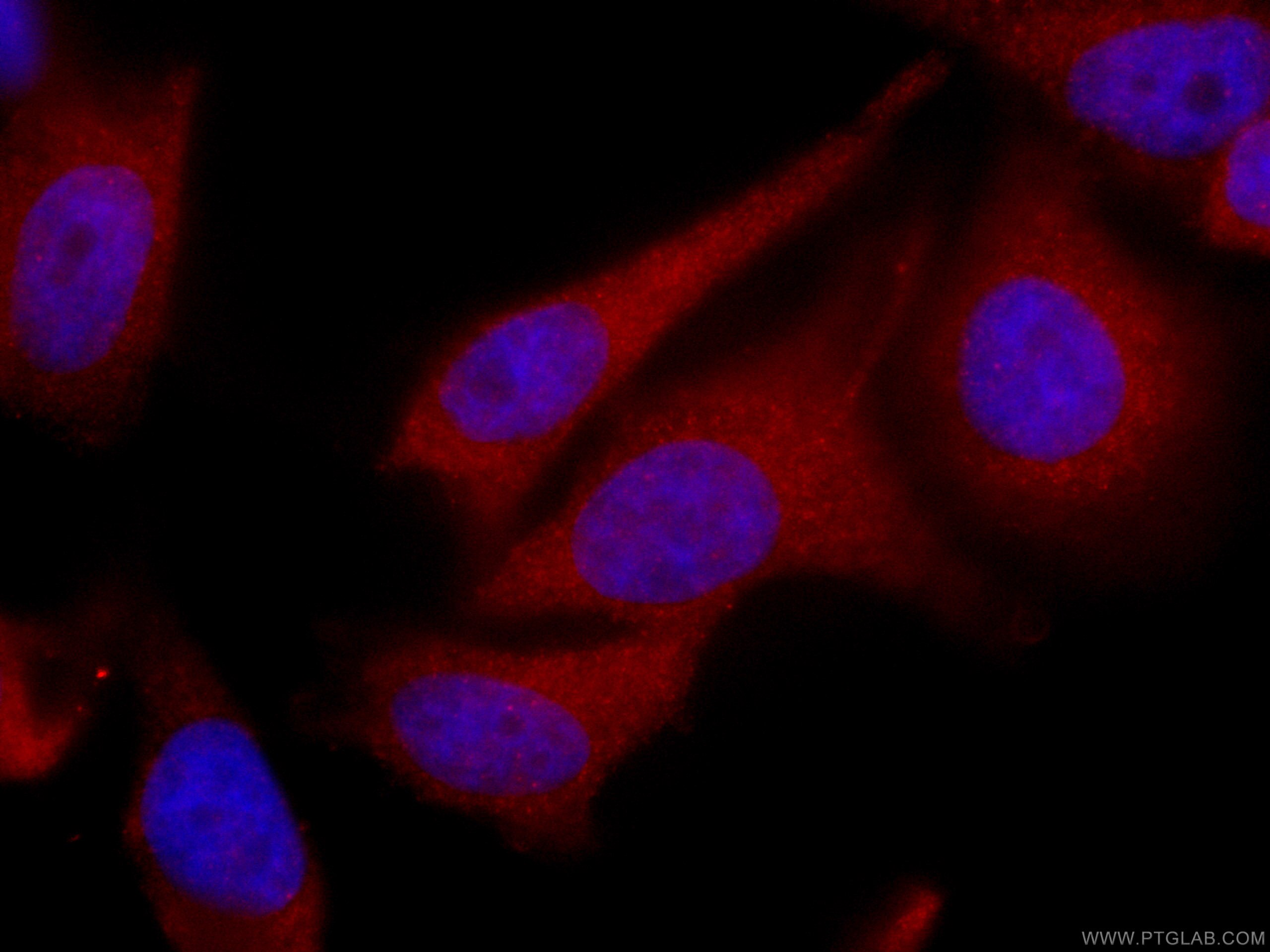- Featured Product
- KD/KO Validated
TPPII Monoklonaler Antikörper
TPPII Monoklonal Antikörper für IF/ICC
Wirt / Isotyp
Maus / IgG2b
Getestete Reaktivität
human
Anwendung
IF/ICC
Konjugation
CoraLite®594 Fluorescent Dye
CloneNo.
5H6F11
Kat-Nr. : CL594-66017
Synonyme
Geprüfte Anwendungen
| Erfolgreiche Detektion in IF/ICC | HeLa-Zellen |
Empfohlene Verdünnung
| Anwendung | Verdünnung |
|---|---|
| Immunfluoreszenz (IF)/ICC | IF/ICC : 1:50-1:500 |
| It is recommended that this reagent should be titrated in each testing system to obtain optimal results. | |
| Sample-dependent, check data in validation data gallery | |
Produktinformation
CL594-66017 bindet in IF/ICC TPPII und zeigt Reaktivität mit human
| Getestete Reaktivität | human |
| Wirt / Isotyp | Maus / IgG2b |
| Klonalität | Monoklonal |
| Typ | Antikörper |
| Immunogen | TPPII fusion protein Ag5296 |
| Vollständiger Name | tripeptidyl peptidase II |
| Berechnetes Molekulargewicht | 1249 aa, 138 kDa |
| Beobachtetes Molekulargewicht | 135 kDa |
| GenBank-Zugangsnummer | BC039905 |
| Gene symbol | TPPII |
| Gene ID (NCBI) | 7174 |
| Konjugation | CoraLite®594 Fluorescent Dye |
| Excitation/Emission maxima wavelengths | 588 nm / 604 nm |
| Form | Liquid |
| Reinigungsmethode | Protein-A-Reinigung |
| Lagerungspuffer | PBS with 50% glycerol, 0.05% Proclin300, 0.5% BSA |
| Lagerungsbedingungen | Bei -20°C lagern. Vor Licht schützen. Nach dem Versand ein Jahr stabil. Aliquotieren ist bei -20oC Lagerung nicht notwendig. 20ul Größen enthalten 0,1% BSA. |
Hintergrundinformationen
TPPII(Tripeptidyl-peptidase 2) is an evolutionary conserved serine peptidase of the subtilisin family that removes tripeptides from the free NH2 terminus of oligopeptides. The 138-kDa TPP2 polypeptide forms large oligomeric complexes of >1,000 kDa that are detected in the cytoplasm of all cell types. In addition, a membrane associated TPP 2 isoform is present in most cells(PMID:15735022).
Protokolle
| PRODUKTSPEZIFISCHE PROTOKOLLE | |
|---|---|
| IF protocol for CL594 TPPII antibody CL594-66017 | Protokoll herunterladen |
| STANDARD-PROTOKOLLE | |
|---|---|
| Klicken Sie hier, um unsere Standardprotokolle anzuzeigen |


